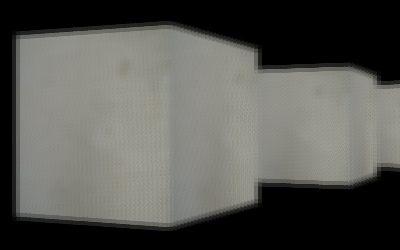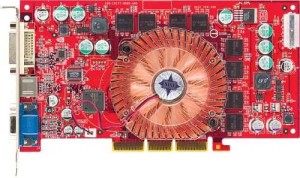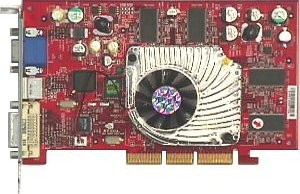I’m back to work after many months, university exams take really a lot of time…
For I am a bit rusty on GLSL programming, but willing to learn new things anyway, I have decided to begin with a simple yet interesting topic, image processing.

The whole thing, actually, needs two rendering passes and relies heavily on Frame Buffer Objects because:
- You render the scene to an off-screen texture.
- You render a quad covering the entire screen and binded to the previously written texture.
- You make a shader process the fragments resulted from rendering this textured quad, i.e. post-processing the original scene.
In this program post-processing is demanded to convolution matrices calculated with these kernels:
GLfloat kernels[7][9] = {
{ 0.0f, 0.0f, 0.0f, 0.0f, 1.0f, 0.0f, 0.0f, 0.0f, 0.0f}, /* Identity */
{ 0.0f,-1.0f, 0.0f,-1.0f, 5.0f,-1.0f, 0.0f,-1.0f, 0.0f}, /* Sharpen */
{ 1.0f, 1.0f, 1.0f, 1.0f, 1.0f, 1.0f, 1.0f, 1.0f, 1.0f}, /* Blur */
{ 1.0f, 2.0f, 1.0f, 2.0f, 4.0f, 2.0f, 1.0f, 2.0f, 1.0f}, /* Gaussian blur */
{ 0.0f, 0.0f, 0.0f,-1.0f, 1.0f, 0.0f, 0.0f, 0.0f, 0.0f}, /* Edge enhance */
{ 1.0f, 1.0f, 1.0f, 1.0f, 8.0f, 1.0f, 1.0f, 1.0f, 1.0f}, /* Edge detect */
{ 0.0f, 0.0f, 0.0f, 0.0f, 1.0f, 0.0f, 0.0f, 0.0f,-1.0f} /* Emboss */
};
The final fragment color is calculated by a simple shader which, at the core, just performs the following:
for(i = -1; i <= 1; i++) for(j = -1; j <= 1; j++) { coord = gl_TexCoord[0].st + vec2(float(i) * (1.0/float(Width)) * float(Dist), float(j) * (1.0/float(Height)) * float(Dist)); sum += Kernel[i+1][j+1] * texture2D(Tex0, coord.xy); contrib += Kernel[i+1][j+1]; } gl_FragColor = sum/contrib; [/sourcecode] When the user chooses a filter, the application updates the kernel currently in use with a call to: [sourcecode language='cpp'] loc = glGetUniformLocation(sh.p2, "Dist"); glUniform1i(loc, dist); loc = glGetUniformLocation(sh.p2, "Kernel"); glUniformMatrix3fv(loc, 1, GL_FALSE, &kernels[curker]); [/sourcecode] Dist is a user defined parameter (you can change it using arrows) that defines the distance in pixels from the center to the contributing sample. Since a month I have created a YouTube Channel, now you can have an idea of how this demo works without downloading and compiling the source code: have a look at this link! 😉







